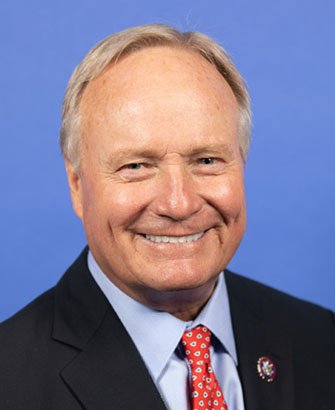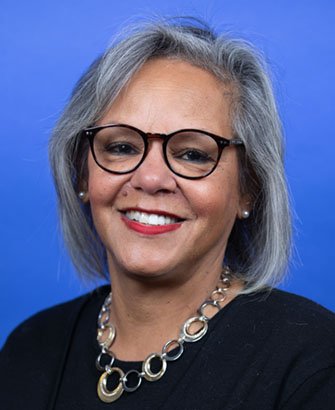
About Stillbirth and the SHINE for Autumn Act
The SHINE for Autumn Act: Bill Overview
The Stillbirth Health Improvement and Education (SHINE) for Autumn Act is federal legislation that focuses on preventing stillbirths through enhanced data collection, research, education, and awareness and is the beginning of a longer-term solution to reducing stillbirth rates.
Learn more about stillbirth here.
-

Data Collection
The problem: Current U.S. stillbirth data suffers from poor quality; not all stillbirths are recorded, not all requested information is provided, and not all provided information is correct. This hinders public health efforts to prevent stillbirths and undermines stillbirth research.
SHINE’s Solution: SHINE would authorize $5 million for each of fiscal years 2026-2030 to provide grants to states to support stillbirth data collection and reporting, including contributing risk factors. Better data will ultimately help to understand the underlying causes of stillbirth and identify strategies for prevention.
-

Awareness & Education
The problem: The first time someone hears about stillbirth should not be when it has happened to them. Families and clinicians need ways to have safe conversations about current evidence-based recommendations on monitoring pregnancies to prevent stillbirths.
SHINE’s Solution: SHINE would authorize $1 million for each of fiscal years 2026-2030 for HHS, in coordination with health care providers, to develop guidelines and educational materials for state departments of health and statistics on stillbirth data collection, data sharing, and educational materials on stillbirth prevention and the risks of stillbirth.
The SHINE for Autumn Act: 119th Congress
The SHINE for Autumn Act was reintroduced into it’s 3rd Congress on September 18, 2025, by Representatives Young Kim (CA-40), Kathy Castor (FL-14), David P. Joyce (OH-14), Robin Kelly (IL-02), together with 34 original cosponsors in the House. Companion legislation was reintroduced in the Senate by Senators Cory Booker (D-NJ), Steve Daines (R-MT), Jeff Merkley (D-OR), and Roger Wicker (R-MS), along with 14 original cosponsors.
The SHINE for Autumn Act: Sponsors
Thank You to the lead sponsors of the SHINE for Autumn Act of 2025!
-

Rep. Young Kim
(R-CA-40)
-

Rep. Kathy Castor
(D-FL-14)
-

Rep. David P. Joyce
(R-OH-14)
-

Rep. Robin L. Kelly
(D-IL-02)
-

Sen. Cory A. Booker
(D-NJ)
-

Sen. Steve Daines
(R-MT)
-

Sen. Jeff Merkley
(D-OR)
-

Sen. Roger Wicker
(R-MS)
History of the SHINE for Autumn Act
The Stillbirth Health Improvement and Education (SHINE) for Autumn Act has consistently demonstrated broad, bipartisan support across multiple congressional sessions, reflecting a national commitment to addressing the U.S. stillbirth crisis.
117th Congress (2021–2022) The Stillbirth Health Improvement and Education for Autumn Act was first introduced on October 5, 2021
House of Representatives: SHINE was introduced by former Reps. Herrera Beutler (R-WA-03), Roybal-Allard (D-CA-40), Mullin (R-OK-02), and Castor (D-FL-14). Additional co-sponsors included Reps. Griffith (R-VA-9), Fitzpatrick (R-PA-1), Kelly (D-IL-2), Payne (D-NJ-10), Jacobs (D-CA-53), Crow (D-CO-6), Craig (D-MN-2), Clarke (D-NY-9), Bacon (R-NE-2), Hinson (R-IA-1), Kilmer (D-WA-6), Gottheimer (D-NJ-5), Williams (D-GA-5), Wexton (D-VA-10), and Del. Norton (D-DC-At Large). The bill quickly gained traction and just two months later, the House passed it under suspension with overwhelming bipartisan support (408-18) on December 8, 2021.
Senate: Companion legislation, S.3972, was introduced on March 31, 2022 by Senators Booker (D-NJ) and Rubio (R-FL). Additional co-sponsors included Senators Menendez (D-NJ), Collins (R-ME), Gillibrand (D-NY), Marshall (R-KS), Murkowski (R-AK), Casey (D-PA), Daines (R-MT), Murphy (D-CT), Boozman (R-AR), Klobuchar (D-MN), Capito (R-WV), and Warnock (D-GA). The bill unfortunately didn’t receive a markup in the Senate HELP Committee before the end of the 117th.
118th Congress (2023–2024) The SHINE for Autumn Act was reintroduced on July 27, 2023 as a bipartisan and bicameral bill.
House of Representatives: Lead sponsors were Reps. Young Kim (R-CA-40), Kathy Castor (D-FL-14), David P. Joyce (R-OH-14), and Robin L. Kelly (D-IL-02). The bill unanimously advanced out of the House Energy & Commerce Committee (45-0) on June 12, 2024.
Senate: Lead sponsors were Senators Booker (D-NJ) and Rubio (R-FL). Despite strong support, the bill was not marked up in the HELP Committee during the 118th Congress, highlighting the need for continued advocacy. Momentum: During the 118th Congress, SHINE maintained strong support with 114 House cosponsors and 43 Senate cosponsors.
Bipartisan Success and Ongoing Efforts
From its overwhelming House passage in the 117th Congress to its broad bipartisan cosponsorship in the 118th Congress, the SHINE for Autumn Act continues to build momentum. Lawmakers on both sides of the aisle have repeatedly demonstrated their commitment to addressing stillbirth, and the bill is now reintroduced into the 119th Congress with strong bipartisan backing. Our hope is that this much needed progress will result in meaningful action towards the bill, one day soon!
Stillbirth
-
A stillbirth is the death of a baby in utero in the second half of pregnancy (at or after 20 weeks of pregnancy), either before or during delivery. Stillbirth is a different kind of pregnancy loss than miscarriage, which is defined as the loss of a baby before 20 weeks of pregnancy.
-
Stillbirth affects about 1 in 175 births, and each year over 21,000 babies are stillborn in the United States. That means that stillbirth occurs about 15 times as often as Sudden Infant Death Syndrome (SIDS), a public health issue that has received far more attention. While public health initiatives have achieved remarkable success in reducing the SIDS rate, the stillbirth rate in the United States has barely changed for over a decade.
-
Stillbirth is often caused by placental issues, umbilical cord accidents, infection, and maternal health conditions. Genetic abnormalities also account for some stillbirths. Unfortunately, many families are unable to learn what caused their baby’s death because access to fetal autopsies is very limited. More perinatal pathologists, better data collection, and additional research are needed to identify stillbirth causes and inform prevention strategies.
-
Improving data collection and reporting, increasing access to qualified perinatal pathologists, expanding provider education, and raising public awareness are all critical steps toward reducing stillbirth and improving outcomes for families.